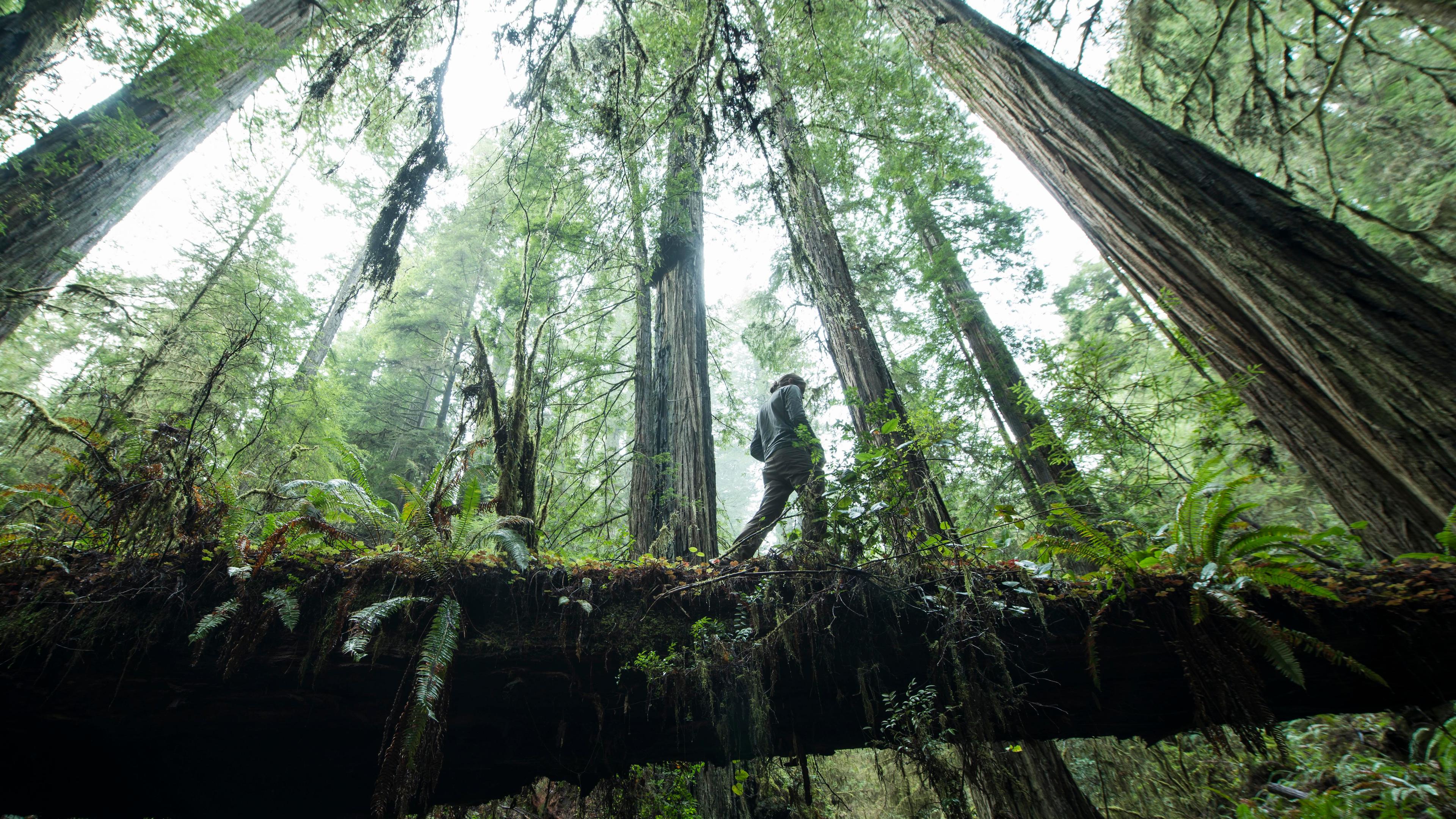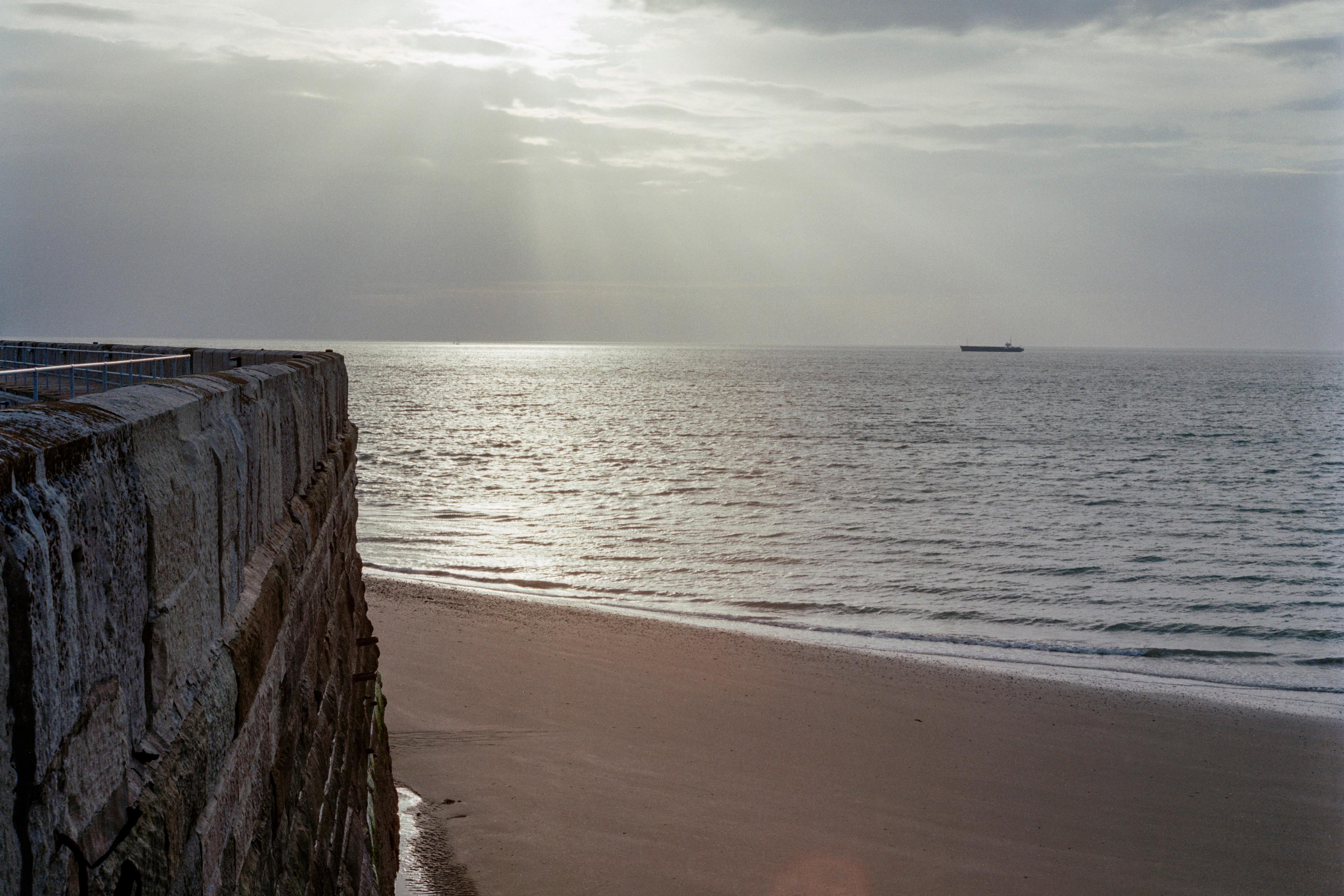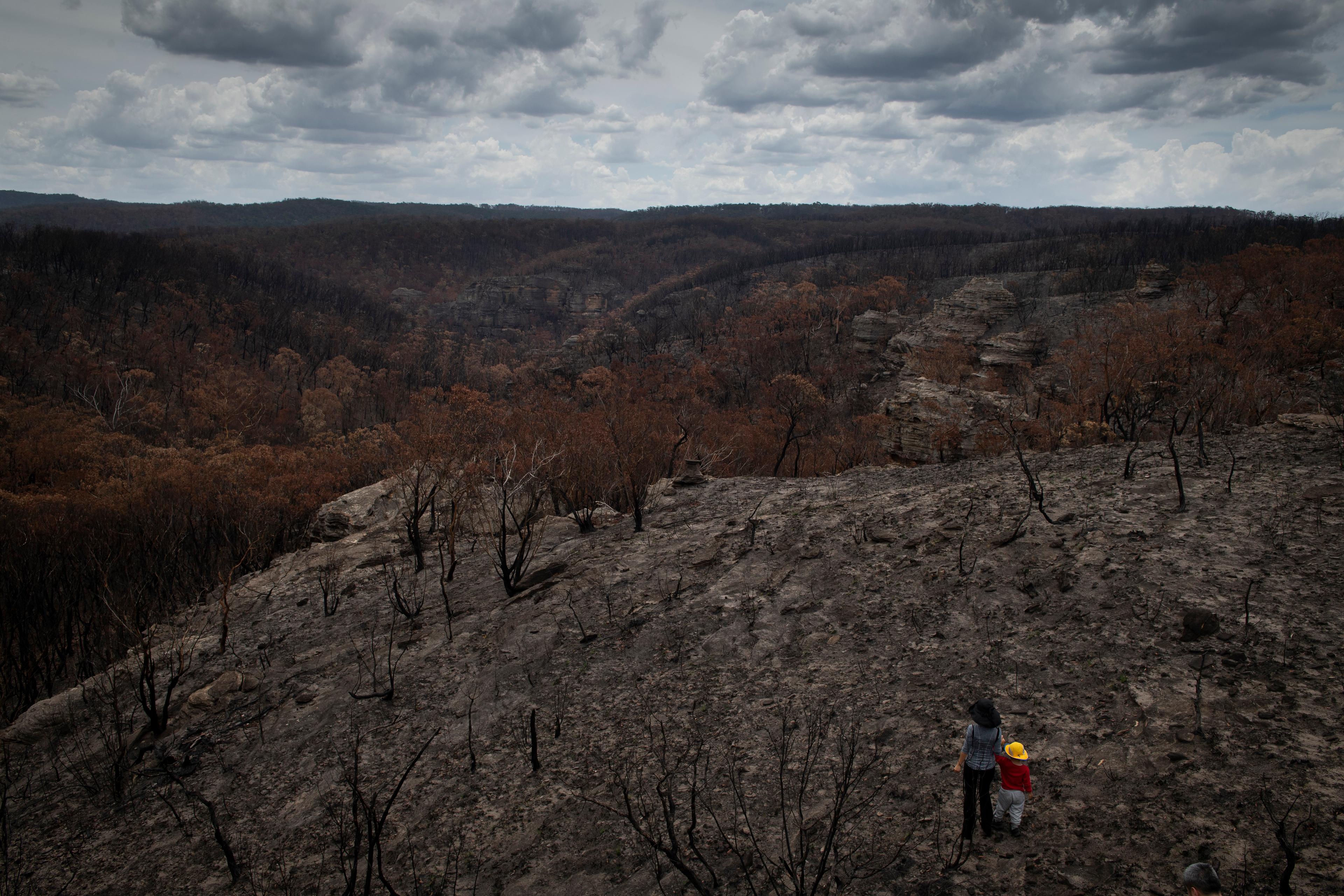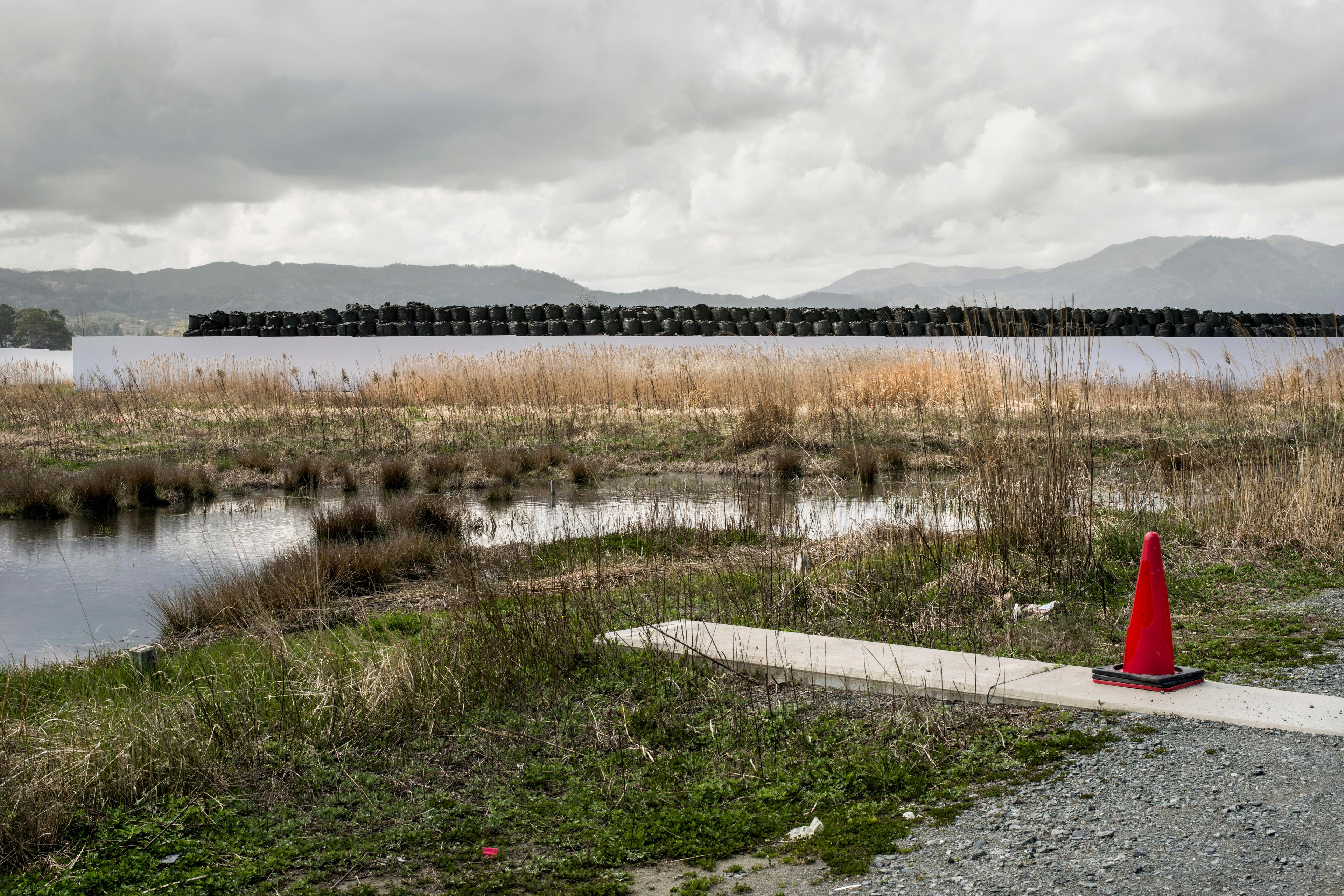Our experience of time is changing. For the philosopher Byung-Chul Han, the early 21st century has left us ‘whizzing without a direction’. Our world is shaped by the restless, disorienting rhythms of near-term deliverables, social media impression counts, technological obsolescence, shallow electoral cycles, rapid news cycles, frenzied culture wars, sudden stock market shifts, gig economy hustles, and occupational burnout. Though it all seems exhausting and unmanageable, the whizzing isn’t slowing: digital platforms now bombard us, minute by minute, with fragments of information that fail to cohere into meaningful narratives, and algorithms that hijack our neurochemical reward systems.
As the treadmill of post-industrial society speeds up, some of us have become so addicted to the stimulation that we struggle to imagine another way to live: psychological research shows that most people would rather receive electric shocks than sit quietly alone with their own thoughts. In his book The Scent of Time (2017), Han borrows a concept from Marcel Proust – une époche de hâte – to describe our overstimulated moment. The ‘age of haste’ has arrived. And its problems are pervasive.
When time whizzes by, individual moments blur together and we stop contemplating how each fits into broader arcs of history. We forget, Han laments, to engage in slower-moving forms of cognition such as wonder, curiosity and introspection. We forget how to reflect and be still. But what can we really do about the age of haste? For many of us, a slower, more contemplative life often feels unattainable. You may feel trapped by the directionless whizzing of the 21st century – trapped on an accelerating treadmill. Can you forge a new relationship with time?
Perhaps your first impulse is to find ways of escaping the age of haste. This is a mistake. We cannot simply break free by ‘exiting’ the world we inhabit. Confronting time requires more engagement with the wider world. This world, however, is not the one defined by near-term deliverables and neurochemically disrupting algorithms. It is the one that reveals itself when you glimpse the Milky Way on a cloudless night. It is the world that becomes clear when you gaze upon a mountain.
Encountering spectacular natural environments can cause a radical shift in how we think about ourselves and the world. According to the psychologist Dacher Keltner, feelings of awe, especially those inspired by natural scenery, can make us feel more collaborative, less egoistic, more altruistic, and more open to social connection. Over the past two decades, Keltner tested this idea through a series of experiments that examined how a person’s attitudes and behaviours change after experiencing awe-inspiring places or things. He found that natural splendour seems to put us in a headspace that lets us reflect on our short lives as ephemeral organisms dwelling on a fragile planet floating in a vast cosmos. This way of thinking can be transformative, but its power is not a recent discovery. Greco-Roman Stoic philosophers, for instance, encouraged retreats into the countryside to proactively ponder life. Venturing into breathtaking outdoor spaces seems to help us step back, slow down and, most importantly, think in the long term. I call this style of thinking ‘longstorming’ because encounters with sublime geophysical and ecological environments can invite the mind to brainstorm about our long-term futures and pasts.
Brainstorming is a technique that was developed by the advertising executive Alex F Osborne in the 1950s. This technique, as Osborne explains in his book Applied Imagination (1953), involves generating a stream of new ideas by riffing about bold plans or even proposing outlandish hypotheticals. Osbourne’s goal was to help employees come up with creative proposals for advertising campaigns, but brainstorming has since become a widely used tool for generating new ideas in all types of contexts. Brainstorming also works well – perhaps even better – out in the wilderness, under vast constellations of stars, where the mind is calibrated to contemplate the deeper timescales of our planet and universe.
The scene felt like a portal to an earlier world – a reminder of the vast chain of life, and of my fleeting moment within it
I believe that purposefully longstorming can help us retool how we relate to time itself. Outdoors, in a headspace better suited to imagining possible scenarios in hypothetical past and future worlds, we can find a way beyond the immediacy of the age of haste.
In this case, a ‘scenario’ is created by weaving together ideas about trends (social, ecological, economic), possible events (the creation of new species, the movement of tectonic plates), and potential detours (such as the unexpected asteroid that collided with Earth 66 million years ago). The scenarios we imagine need not even be scientifically accurate. The simple act of temporally extending the intellect across time is enough to change how we experience the here and now.
I recently tried longstorming while hiking through Fern Canyon in Prairie Creek Redwoods State Park in Northern California. Standing inside the canyon itself, which a tiny stream had carved out over aeons, I thought about the fern species covering the 15-metre-high stone walls beside me. The ancestors of these leafy plants dated back 325 million years. Climbing over the tangled roots of a downed redwood tree, itself several hundred years old, I watched the rays from our 4.6 billion-year-old sun filter through the foliage, casting a soft dappled light. As I walked, I saw a tiny waterfall sprinkling over pads of moss as it fell from the high canyon walls. Towering above the canyon like silent guardians, I saw the tallest living things on Earth: coast redwoods. The ancestors of these trees have been growing in the region for about 20 million years, and their relatives thrived in the Jurassic period, roughly 160 million years ago. The scene felt like a portal to an earlier world – a reminder of the vast chain of life, and of my fleeting moment within it.
As I longstormed, I envisioned other moments from the past. Imagining how the nearby waterway would have looked hundreds of years ago, I pictured the redwood-plank homes built on its banks by the Indigenous Yurok peoples, who were some of the earliest inhabitants in the region. My mind drifted even further back. Tens of millions of years ago, redwood forests grew from Greenland to Alaska, France to the Czech Republic, England to Svalbard. The redwoods bear witness to the depths of time.
A redwood forest can offer a temporal perspective that is rare in contemporary consumer societies
As I wandered, the canyon’s sprouting ferns and trickling water proceeded at a slow, deliberate pace. This invited me to ponder Earth’s ongoing dance of creation and erosion, growth and decay. Boundaries between the natural landscapes of the national park and the inner landscapes of my thoughts blurred. I thought about the impermanence of human endeavours, and how soon the digital equipment I had with me – phones, cameras – would become obsolete. I thought about the redwoods absorbing our emissions from the atmosphere, taking in carbon dioxide as they continued to grow. I pondered how climate change could reduce the coastal fog upon which the trees depend, or how reduced snowmelt could someday hinder the redwoods’ access to water. And I thought about my own life, my ancestors, and the intergenerational chains of connection that bind us to Earth and each other.
When I left the redwoods, and stopped longstorming, I found myself in a different frame of mind than when I arrived. I felt more tranquil and open to time. And I’m not the only one. In 1969, Claudia Alta ‘Lady Bird’ Johnson, then the First Lady of the United States, noted a similar experience in a Californian redwood forest. What she describes is a simple form of longstorming:
One of my most unforgettable memories of the past years is walking through the redwoods last November – seeing the lovely shafts of light filtering through the trees so far above, feeling the majesty and silence of that forest, and watching a salmon rise in one of those swift streams – all our problems seemed to fall into perspective and I think every one of us walked out more serene and happier.
Sublime outdoor spaces, such as a redwood forest, can offer a temporal perspective that is rare in contemporary consumer societies. Longstorming acts on this by creating a contemplative headspace in which the fleetingness of the present and the vastness of deep time mingle in harmony. This underscores the importance of conserving outdoor spaces not just as charismatic ecosystems or natural resources, but also as ideational resources for connecting our minds with the deeper timescales of our planet. For some, contemplating these settings may evoke a sense of planetary connection that makes the restless whizzing of our daily lives less oppressive, less urgent. For some, this may also be confronting, as we realise how insignificant our daily concerns are in the grand timelines of the universe. For others, it may shed light on hopes, fears, dreams, anxieties and desires.
By longstorming, your mind becomes a theatre for viewing possible planetary events across time. This is similar to the geologist Marcia Bjornerud’s concept of ‘timefulness’. Thinking about geological events on Earth, she writes in her 2018 book, can help us become more ‘mindful that this world contains so many earlier ones, all still with us in some way – in the rocks beneath our feet, in the air we breathe, in every cell of our body.’ Longstorming is also related to the poet Arthur Rimbaud’s concept of Robinsonner, in reference to Robinson Crusoe, from his poem ‘Romance’ (c1869-71). This invented French verb denotes the act of daydreaming by wandering mentally to distant places and times. Such plays of temporal imagination are essential to resisting the pressures of our age of haste.
Anthropologists and geologists have long advocated that we focus on long-term horizons. In the 1970s, Margaret Mead warned against the modern, Western, hyper-individualistic pathology of being too rigidly rooted in one’s own cultural concept of time – a phenomenon that the anthropologist Robert Textor later termed ‘tempocentrism’. Bjornerud has diagnosed consumer society with ‘chronophobia’: the time denial associated with lives of instant gratification. In my book Deep Time Reckoning (2020), I caution against ‘shallow time discipline’: the way that socioeconomic pressures for short-term gains have created incredibly short-term rhythms in our lives. Tempocentrism, chronophobia and shallow time discipline are all ways of diagnosing our ever-accelerating relationship with the world, which we experience as a hyperactive whizzing that spins us, faster and faster, toward death.
If we want all of society to resist the age of haste, we first need to reform its entrenched structures of poverty
Fortunately, you do not need to visit charismatic ecosystems, like redwood forests, to begin longstorming. Walking down any city street or a country road, you can attune to how the rocks beneath your feet have multimillion- or multibillion-year geological histories. You can attune to how the air you breathe is altered by decades of carbon emissions. You can attune to the evolutionary histories of the chirping birds or even the cells in your body. Contemplating the passage of time is, at some level, available to anyone willing and able to longstorm – to begin wondering about the longer timelines of the universe. When you return to your smartphone afterwards, you might even look differently at the device itself: less attuned to the newsfeeds and pings, and more attuned to the ancient geological histories of the elements and minerals that make it up. After all, many of the metals found in smartphones, such as gold and copper, were formed billions of years ago among distant stars.
That said, certain geophysical features (like mountain vistas or idyllic countryside), certain activities (like hiking or backpacking), and certain mental states (like awe or calm) tend to draw out more enriching temporal experiences than others. This has an unfortunate implication: opportunities to have life-transforming brushes with the deep time of our planet and cosmos are not evenly distributed across society. Not everyone is capable of leisurely neighbourhood walks, let alone treks up to mountaintop vistas. Not everyone has the resources to make such a trip, let alone the time. If we want all of society to resist the age of haste, we first need to reform its entrenched structures of poverty – temporal or otherwise.
In the age of haste, longstorming should be a necessity, not a luxury. Without a deeper attunement to planetary time, the therapies of the 21st century will deliver healing that soothes us only in the moment. The age of haste requires healing of a different kind: longer, slower, planetary.








